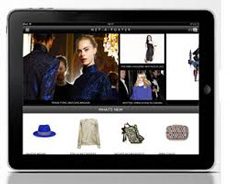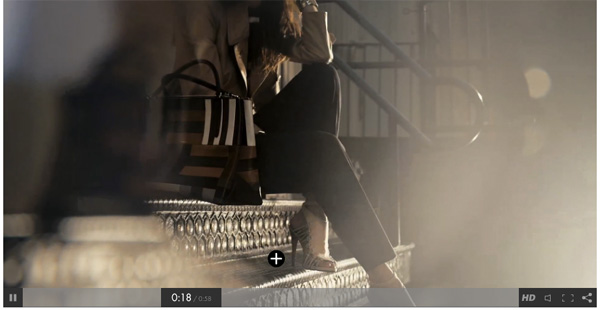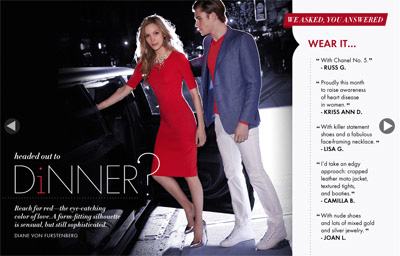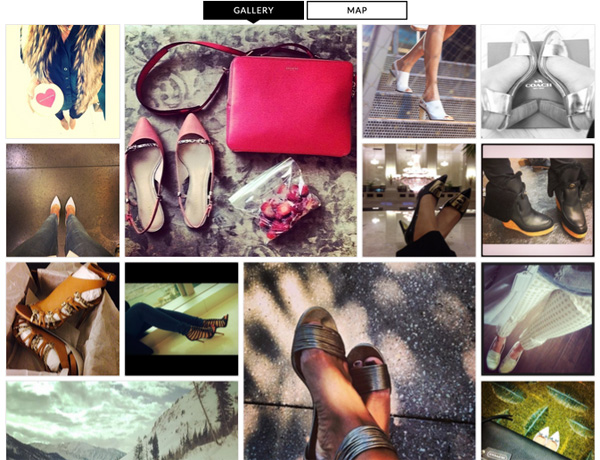The digital world uses plenty of metaphors. For example, your computer’s “desktop,” “dock,” “windows” and “tabs,” or your iPhone’s “lightning connector.”
The “online catalog” is a metaphor for the print catalog. Though search tools and hyperlinked category menus and shopping carts make digital catalogs oh-so-awesome, today’s ecommerce sites still reflect the Web of the late 90′s — even with the advancements in personalization, video, 360-degree views, customer reviews and social features.
This model ain’t broke (yet) for catalogers like Land’s End, Brookstone, Pottery Barn, Orvis or Ikea. (Though even catalog brands are realizing that today’s technology offers new and contextual cross-channel experiences beyond the storefront).
Think about luxury’s legacy of print and outdoor advertising that is brand rather than information-centric; Ads that are emotional, that convey a background story, sell an image, promise an experience. You stop to look at them. They make you feel something.
They’re not a thumbnail image with a description and list of available sizes.
So why have so many luxury brands selling direct to customer online adopted the catalog look and feel? Is this approach on-brand? Is it the best way to deliver the emotional experience that the luxury customer is looking for and accustomed to in-store?
The rainmakers in luxury are looking beyond the online catalog model and embracing CMS-driven ecommerce, building content-rich web and mobile experiences that tell the brand story, while enabling commerce where it’s needed within this content. Not just on the web, but in mobile apps, in-store experiences, and new and emerging touch points.
What does this look like in the wild?
In-content commerce
Luxury brands are not merely retailers — many of them are also sitting on heaps of digital content that is highly shareable and can be commerce-enabled.
Coach.com uses home page video to merchandise its collection, including shoppable hotspots. This video can easily be distributed to affiliate partners like style blogs, magazines, shared through Youtube and social networks, or repurposed in short chunks through Vine and Instagram. It can also live inside mobile apps and in-store digital signage.
Harrods is literally a tourist destination, but it’s one-night-only Summer of Now virtual shopping event on its dot-com site brought the in-store experience online, with flash sales, giveaways and gifts with purchase and a Great Gatsby-esque experience complete with jazz and cocktail pop-up bar and of course — shoppable video.
While hotspots can link back to an online catalog – the best experience is a seamless one, where transactions can occur within media, wherever the customer consumes the content. This is a headache for traditional ecommerce platforms built for the catalog experience. To achieve, a brand needs to take a CMS-driven approach to commerce.
Socializing commerce
Neiman Marcus doesn’t just ask for feedback on Facebook, it uses crowd sourced style tips from fans to merchandise its online magazine InSite and email campaigns.
Social content can also be pulled directly into product pages using APIs, or with tools like Ditto’s image recognition to discover photos of your brand on social networks.
Coach’s #COACHFROMABOVE page features crowd-contributed images.
A next step for #COACHFROMABOVE could be to identify which products are available for purchase and support a way to buy, or suggest “products like this.” Emerging image recognition tools may be a solution here in the near future.
Augmented in-store experiences
Burberry’s Beauty Box in London boasts an “exclusive collection of services, accessories, gifts and digital experiences.”
The store is the first for the brand to exclusively use mobile checkout through iPads (carried by sales associates). Makeup looks from runway shows are available for purchase after watching video in-store. Customers can virtually try on nail polish by placing bottles on RFID-enabled platforms.
The holy grail of in-store luxury combines iBeacons with mobile and loyalty apps, bringing digital content to customers’ mobile phones, whilst collecting data to improve in-store and online personalization and merchandising.
This is all possible today, but only with the right technology.
Interactive event marketing
Much of luxury is about lifestyle. In its fifth year, Hermes’ popular show jumping event featuring its equestrian leatherware was live-streamed on the façade of a nearby hotel. What was missing was a shopping component. Companion apps and shoppable displays could tie commerce back into the physical experience.
Gamification
Bergdorf Goodman hosted an interactive social media scavenger hunt at SXSW last week. Players were asked to hunt down BG’s social media manager Cannon Hodge, and post her picture to Instagram. The prize pack included the wait-listed Monsur Gavriel bucket bag, with the winner judged on quality of the photo.
Hints were dropped across social networks on how to “play.”
There’s unlimited potential to how commerce can connect to live events, the key is to be nimble in creating customized content and experience tailored to the events, bringing the digital experience into the physical world, and bringing data back into the system to optimize shopping experiences across touch points for individual luxury customers.
Wearable tech
We’ve yet to see what will be done with Google Glass and other connected devices, though watchmaker Alpina Frederique Constant isn’t wasting any time.
Alpina will use Google Glass internally, with consumers and channel partners. For example, creating how-to videos, tutorials and virtual tours of the brand’s manufacturing headquarters for consumers and tutorials on merchandising and functionality for merchants. It will also be used in more than 2800 watch boutiques to ensure displays are in line with brand guidelines. Sales associates take photographs and upload them to a shared database via iPad or Android.
“Google Glass is going to have effects on a number of categories within our businesses. The most obvious is the recording functionality that allows you to capture and create customized content from a first person perspective. We’ll be able to share out that content across our social media channels and web presence, but also with our retail partners and across their own social media channels.”
Reinventing Digital Commerce
Whatever the digital innovation, the ecommerce experience is moving away from the “catalog” experience. Luxury brands selling direct to consumer have the opportunity to reinvent their ecommerce businesses to become truly omnichannel, immersive, content-driven and socially integrated, setting themselves apart from their retail channel partners.
But to get there demands CMS-driven commerce, the ability to plug transactional capabilities into any and all touch points, while collecting and feeding back the data generated by consumer activities across channels.









